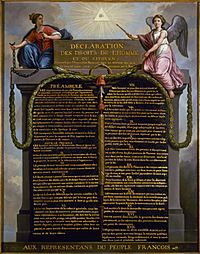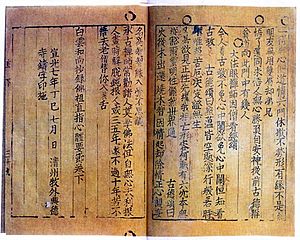Memory of the World Programme facts for kids

The Memory of the World Programme is a part of the United Nations Educational, Scientific and Cultural Organization (UNESCO). It is part of a strategy for preserving history. The programme focuses on archives and libraries.
The UNESCO programme began in 1992. It promote the importance of historical documents.
Contents
International Advisory Committee
The program is administered by a body known as the International Advisory Committee (IAC). There are 14 members. Each is appointed by the UNESCO Director-General.
Memory of the World Register
Select additions to the World Register are chosen at biannual meetings of the IAC.
- Bayeux Tapestry
- Biblioteca Malatestiana
- Gero-Codex
- Jikji
- Magna Carta
- Matenadaran
- Shahnameh
- Symphony No. 9 (Beethoven)
- Tabula Peutingeriana
- The Communist Manifesto
- The Diary of a Young Girl
- Treaty of Tordesillas
- Vienna Dioscurides
- Woodblocks of the Nguyễn Dynasty
Jikji Prize

The Jikji Prize was established with the South Korean government. The $30,000 prize and all costs associated with the prize are funded by South Korea.
Recipients
- 2005: Czech National Library (Prague)
- 2007: Austrian Academy of Sciences, Phonogrammarchiv (Vienna)
- 2009: National Archives of Malaysia (Kuala Lumpur)
- 2111: National Archives of Australia, Canberra.
See also
 In Spanish: Programa Memoria del Mundo para niños
In Spanish: Programa Memoria del Mundo para niños

